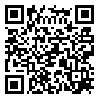BibTeX | RIS | EndNote | Medlars | ProCite | Reference Manager | RefWorks
Send citation to:
URL: http://jhsw.tums.ac.ir/article-1-15-en.html
Introduction: In addition to direct and indirect costs of occupational accidents imposing on production companies, they impact the productivity of labor, too. However, gaining more profits and having less costs is always the main concern among industrial managers. Considering safety measures can be effective way to reduce occupational accidents and costs as well as negative impacts on production systems.
.
Material and Method: In this paper, a risk assessment method using fuzzy and MATLAB software is presented to determine the safety level of production environments. The main parameters of this model include three items: accident probability, accident severity and current safety level. For this purpose, the statistical data of accidents and their causes published by Social Insurance Organization have been used in this study. Furthermore, expert judgments of safety and health professional have been used to determine the severity of accidents. In the fuzzy method, the Mamdani deductive fuzzy model has been adapted due to its easy applicability. Application of the model has been shown using a practical instance.
.
Result: The defuzzified value for RL is found to be 3.48. Linguistic risk level expression is 100% substantial high risk that is full membership for fuzzy average set.
.
Conclusion: The application of the proposed method can reveal which safety items and factors are most important in improving workers safety, and therefore decide where to concentrate resources in order to improve the safety of the work environment.
| Rights and permissions | |
 |
This work is licensed under a Creative Commons Attribution-NonCommercial 4.0 International License. |



